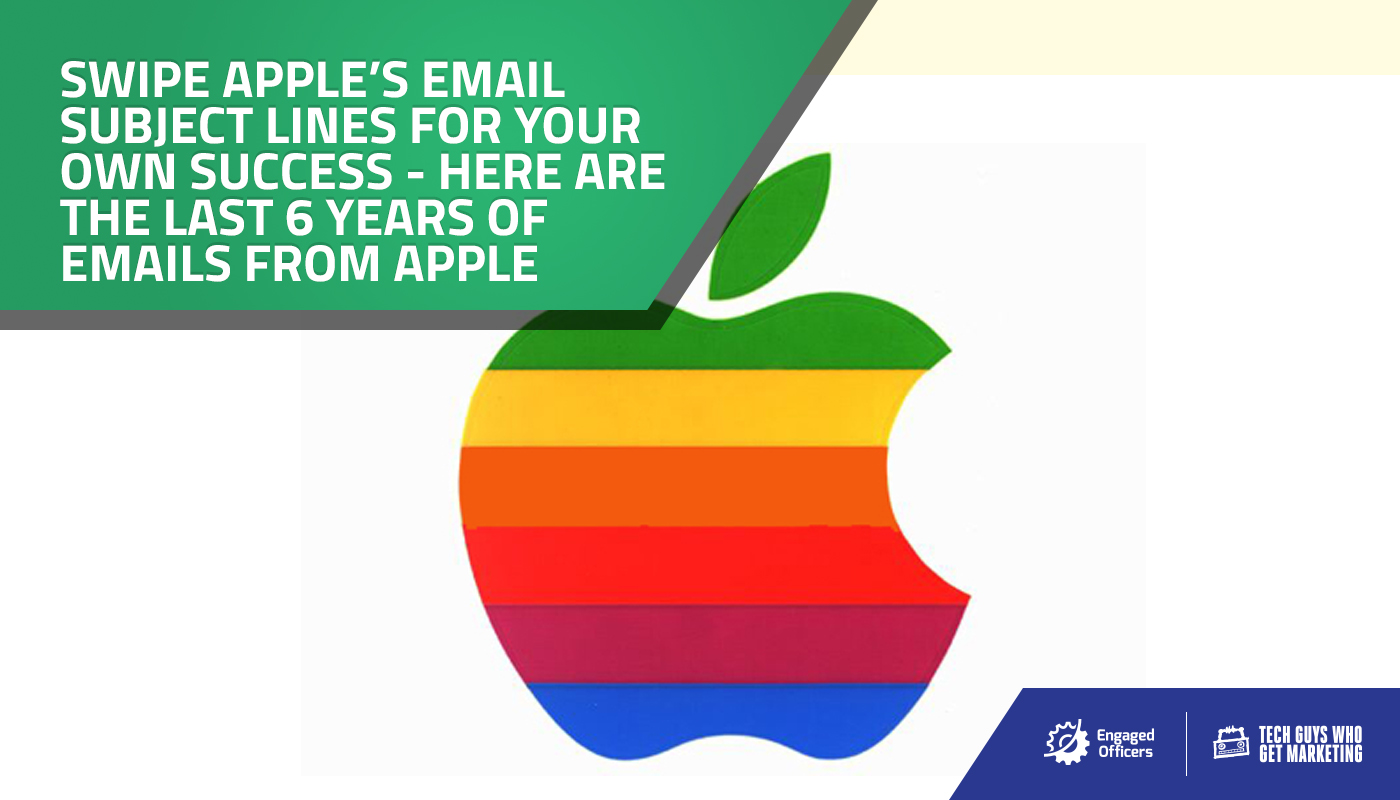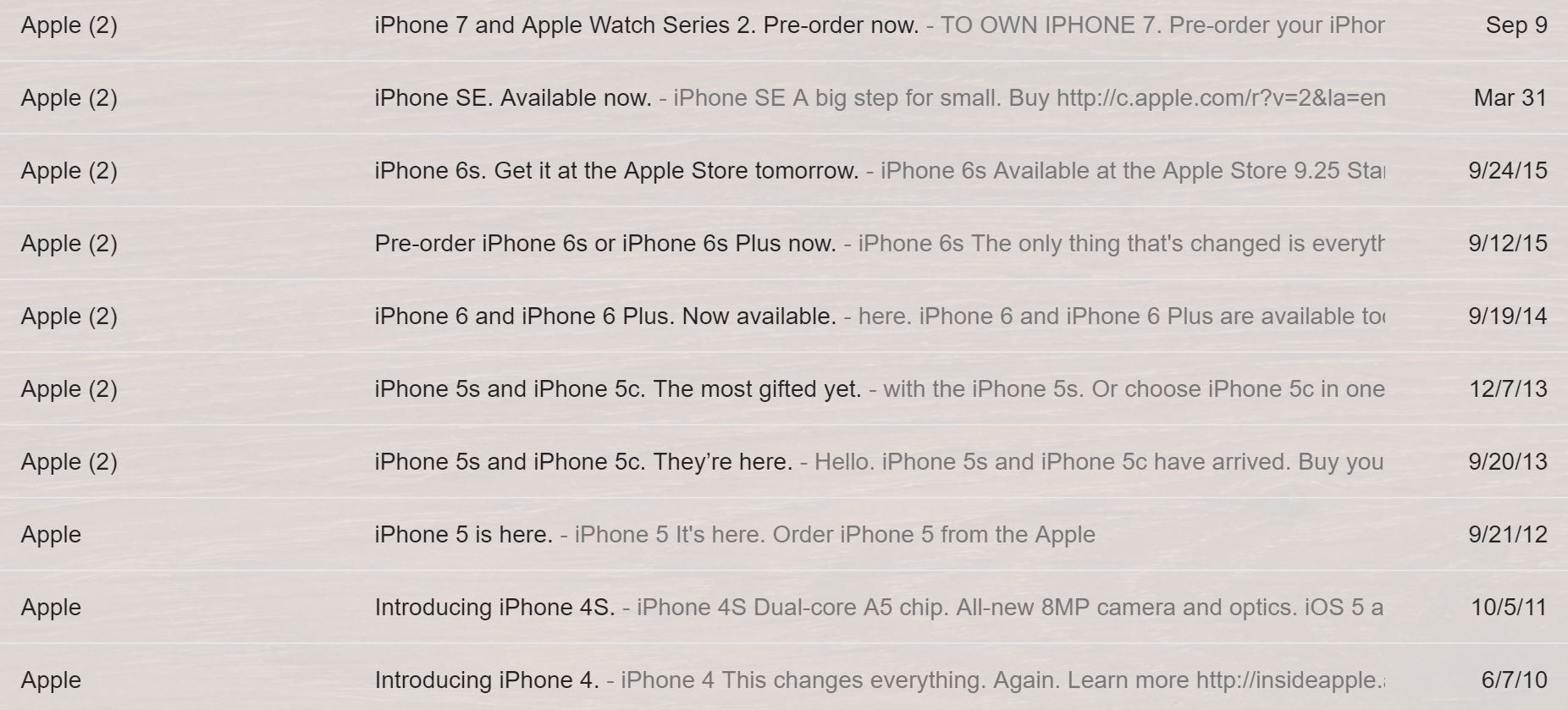Deconstructing 6 Years of Apple’s iPhone Announcement Emails

On Wednesday, September 7th, 2016, Apple hosted one of their coveted Keynotes where they filled a room of fangirls and boys in order to launch their latest innovations. I’d be lying if I said I wasn’t excited about it! I’ve been a fan of Apple’s phones since they came out, having crossed over to the Dark Side only once and am forever ashamed of my misgivings.
The media event is a perfect symphony of tease, entertainment, showcasing and profits. Apple does a great job at building a stampede of buzz just before and immediately after their events.
Apple used words like “courage” to define their new products. Sure, it’s all marketing, but it’s good marketing.
If you have a business that releases products and therefore do product launches, you’d be smart to swipe from what Apple’s done with their emails.
I used to walk my students at Tulane through this example specifically because Apple has been able to use the subject line of an email so tremendously well. Below are the last 6 years worth of Apple iPhone announcement emails:

Let’s deconstruct this a bit…
First, the sender name is always the same. Apple. Boring, but succinct. If you’re emailing a product out, I encourage you to be a real human and use your own name. I’d much rather receive an email from Jon Snow than an email from “The Night’s Watch.” The most important thing here is their commitment to continuity in all their emails. When I get an email from “Apple,” I know who it’s from.
Now, let’s look at the subject lines. Starting at the bottom, there’s the release of the iPhone 4 and 4S. Talk about an easy rewrite!
Apple has managed to prep everyone receiving the email to know exactly what the email is. “It’s here.” is their basic message. Utterly simple, but useful too.
During the winter holidays of 2013, Apple said “The most gifted yet.” A simple promotion to sell their phone, encouraging you to be like everyone else who is cool.
Notice the dates of the emails. Aside from the wonky iPhone SE that was released in March of this year (last day of Q1, mind you), all other major phone announcements happened in September. Between the 9th and 24th, September’s announcements adequately prepared the masses to plan their Q4 purchases including holiday gifts.
The iPhone 4 email was sent on a Tuesday. The 4S on a Wednesday. The 5, the 5s/5c, the 6 and 6 Plus on a Friday. The 6s and SE were emailed on a Thursday, and finally last week’s email came on a Friday.
All things being equal, Apple likes to send out new product announcements on Friday’s.
The emails were delivered across the day; from 7:01am Eastern to 10:40pm Eastern. There doesn’t seem to be rhyme or reason to the hour in which the emails were delivered, but this could be due to the fact that Apple is sending millions of emails for each launch. A bit too many to all send out at a single, tested, ideal time.
Here’s how to apply Apple’s emails to your business:
First, keep your subjects short. 30-50 characters is plenty and it forces you to be more clear. Maybe people use email subject lines to tell the story (I’m looking at you, Mike!). We want an email subject line that gets the email opened.
An email subject line has no other outcome as desireable as getting the actual email opened. Create intrigue. Be clear about what’s inside. Tease. Apple didn’t say “iPhone 7 $749 Buy at Apple.com” because that would have dropped the intrigue. Instead, they said “It’s here.” “Now available.” You want to know the features? Click to open.
If I was hired to write an email for a product launch and I had one shot to make it work, I’d start by rewriting these Apple subject lines. I’d rewrite them a few times until I found one I was the most happy with. The single subject line that was clear, created intrigue and encourage the reader to open the email.
Whenever possible, however, it’s better to test the email subject lines you’re using. Apple likely takes their mega-million person mailing list and sends out 100k emails in one variation, then 100k out in another. They look for Open Rates, Click Through Rates and possibly even Purchase Rates. They’ll take the winner of that test and send it out to the rest of their list. If you can do that, do it. If you can’t, start by swiping from the Big Dogs and see if you can achieve some of their success.
What’s your favorite email subject line? Do you have one you use when you life-or-death need a reply? Write it in the comments below.
Casey
